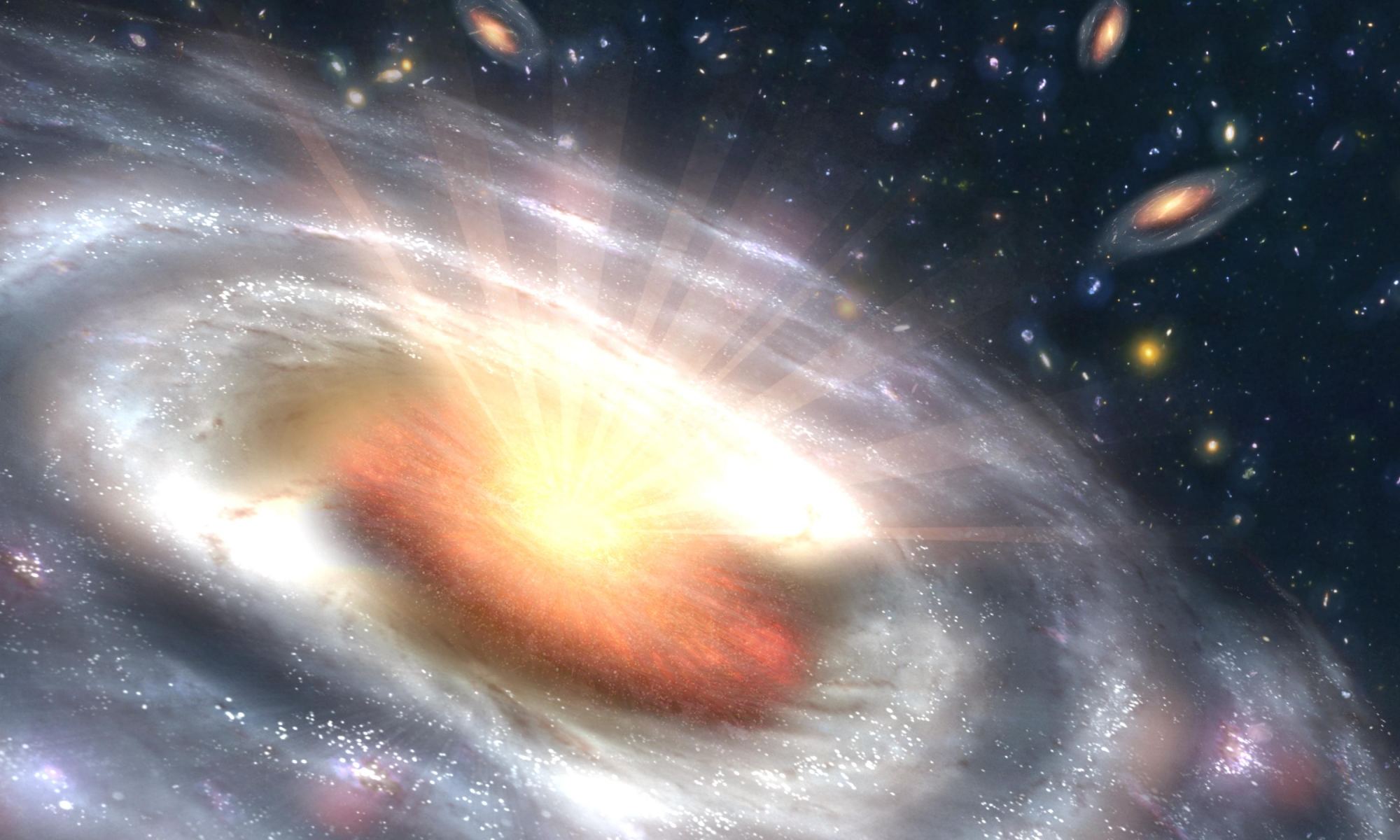It wasn’t long after the Big Bang that early galaxies began changing the Universe. Less than a billion years later, they had already put on a lot of weight. In particular, their central supermassive black holes were behemoths. New images from JWST show two massive galaxies as they appeared less than a billion years after the universe began.
One of the galaxies weighs in at a whopping 130 billion times the mass of the Sun. It’s black hole-driven quasar has 1.4 billion solar masses. (A quasar is the bright active nucleus of a galaxy thought to be powered by a supermassive black hole.) It turns out that these galaxies and their central black holes have completely different sizes in relation to each other. In addition, those spectacular masses raise some challenging questions. How did they get so massive so fast in the infant Universe? And, which came first? The galaxy or the black holes?
Those make up a puzzle facing an international team of researchers led by Xuheng Ding and John Silverman (both of the Kavli Institute for the Physics and Mathematics of the Universe). They announced their initial findings in the June 28, 2023 edition of the journal Nature.

Exploring the Quasar Hearts
The quasars they observed are called J2236+0032 and J2255+0251. Their host galaxies were first observed by the Subaru Telescope in Hawai’i. Both galaxies are relatively dim and are good targets for studies of the early universe. They lie at redshifts of 6.4 and 6.34. Those place them at a time when the universe was only 860 million years old. The research team at Kavli then used JWST to take a deeper look at these objects.
JWST looked at them at infrared wavelengths of 3.56 and 1.50 microns. In addition, JWST’s NIRSPEC spectrometer refined the galaxy’s stellar populations. Analysis of the data further refined the mass of the two galaxies. It also revealed the speed of gases moving at their hearts. That allowed the team to determine the masses of the two central supermassive black holes that power these quasars.
Answering Questions about these Quasars
One thing jumped out from the data right away: the ratio of the masses of the galaxies and their black holes. It turns out that the size of a supermassive black hole apparently tracks with the size of its host galaxy. Astronomers are exploring this relation in galaxies in the nearby universe, and find that the larger a galaxy is, the larger its central black hole should be. The two galaxies in the JWST discovery show the same relationship between their masses and the masses of their black holes.
The implication here is that the relationship actually was in place very early in cosmic history. This raises other questions about the mechanisms that connect the galaxies and their black hole cores to create this ratio. Astronomers suggest several scenarios. First, since these are active galactic nuclei (quasars), they can trigger further star formation in the galaxy via their jets and winds. But, those same activities can quench the births of new stars. This is an interesting feedback mechanism that causes the rate of star formation to track the rate of black hole accretion. Essentially, the AGN puts checks and balances on the galaxy’s growth.
Another idea is that the ratio of the masses of the galaxies and black holes is driven by black hole growth and star formation using the same fuel sources. This scenario could happen pretty easily after two fuel-rich galaxies merge. Mergers often spur star formation, so this could have happened with these early galaxies at a time when mergers were a dominant activity. A third scenario suggests that there may only be a statistical relationship and that more studies need to be made.
Need More Data
The data from galaxies HSC J2236+0032 and HSC J2255+0251 have posed the questions. Now it’s time for astronomers to observe more of these objects in the early universe to see if they can answer them. The team will continue their observations using JWST during the current Cycle 1. They already have telescope time to study J2236+0032 in more detail to answer some of the outstanding questions raised by this current work. In particular, these studies might be able to tell us if galaxies came first or black holes did. They’ll also reveal more details about the growth rates of both galaxies and their black hole-driven quasars in these early epochs of the Universe’s history.
For More Information
Starlight and the first black holes: researchers detect the host galaxies of quasars in the early universe
Feedback from AGN-driven Winds
The Link Between Black Holes and Their Galaxies
Detection of stellar light from quasar host galaxies at
redshifts above 6


“It turns out that these galaxies and their central black holes have completely different sizes in relation to each other. In addition, those spectacular masses raise some challenging questions. How did they get so massive so fast in the infant Universe?”
I’m not sure what the article wants to say here. Later in the article it is claimed the mass ratios are fairly constant over universe lifetime, so it could be that one or both of the masses are considered fast growing. (Both galaxies and supermassive black holes are variously considered fast growing in many articles.)
However, the galaxy masses are estimated from their luminosity, and this can be problematic at higher redshifts starting from z=6 and up. “The most successful tool for identifying ultra-high-redshift candidates and inferring their properties is photometric template fitting. However, current methods rely on templates derived from much lower redshift conditions, including stellar populations older than the age of the Universe at z > 12, a stellar
initial mass function which is physically disallowed at z > 6, and weaker emission lines than currently
observed at z > 7.5.” [“Templates for Fitting Photometry of Ultra-High-Redshift Galaxies”, arxiv 2208.07879]
Hopefully this exciting result stands though!